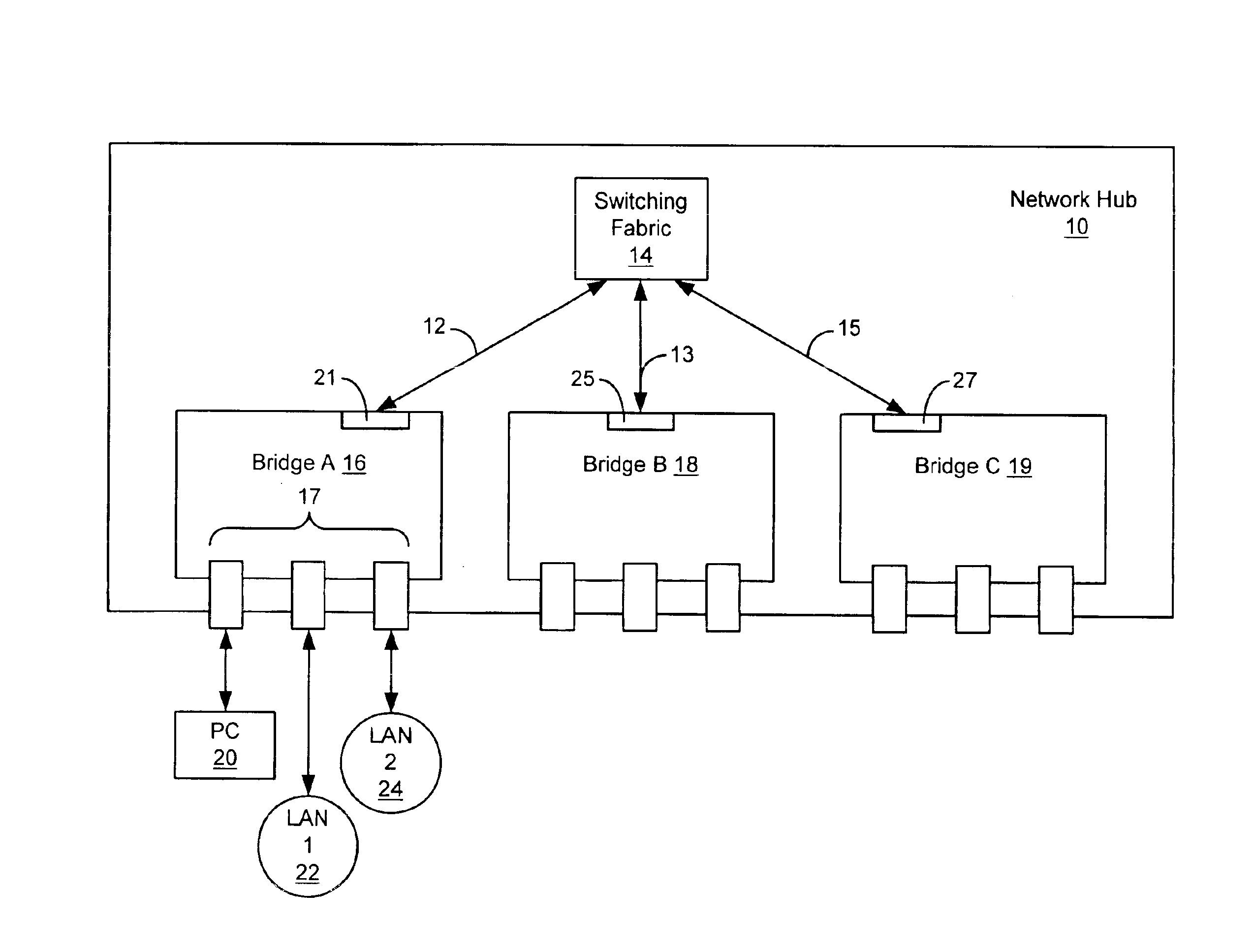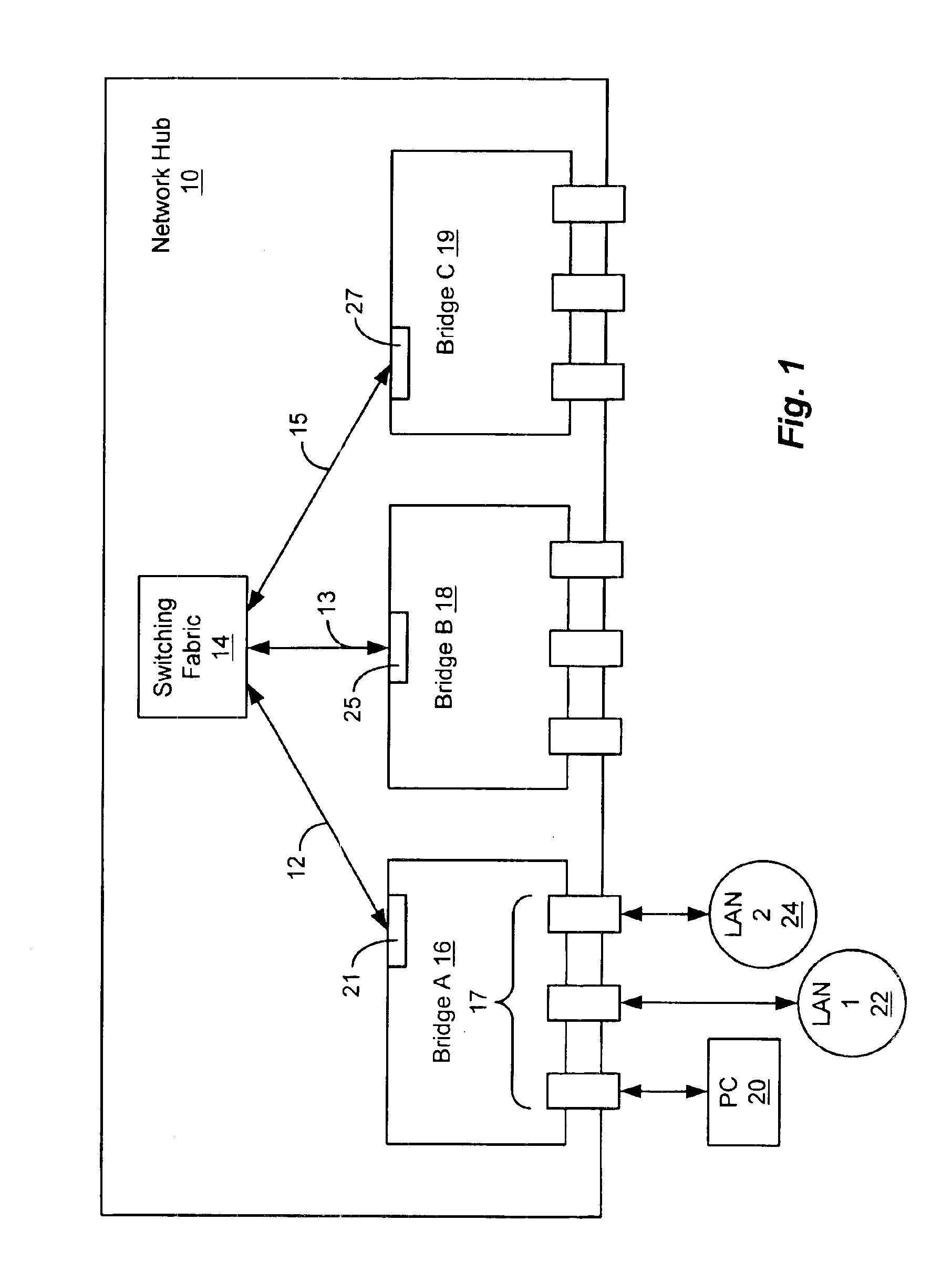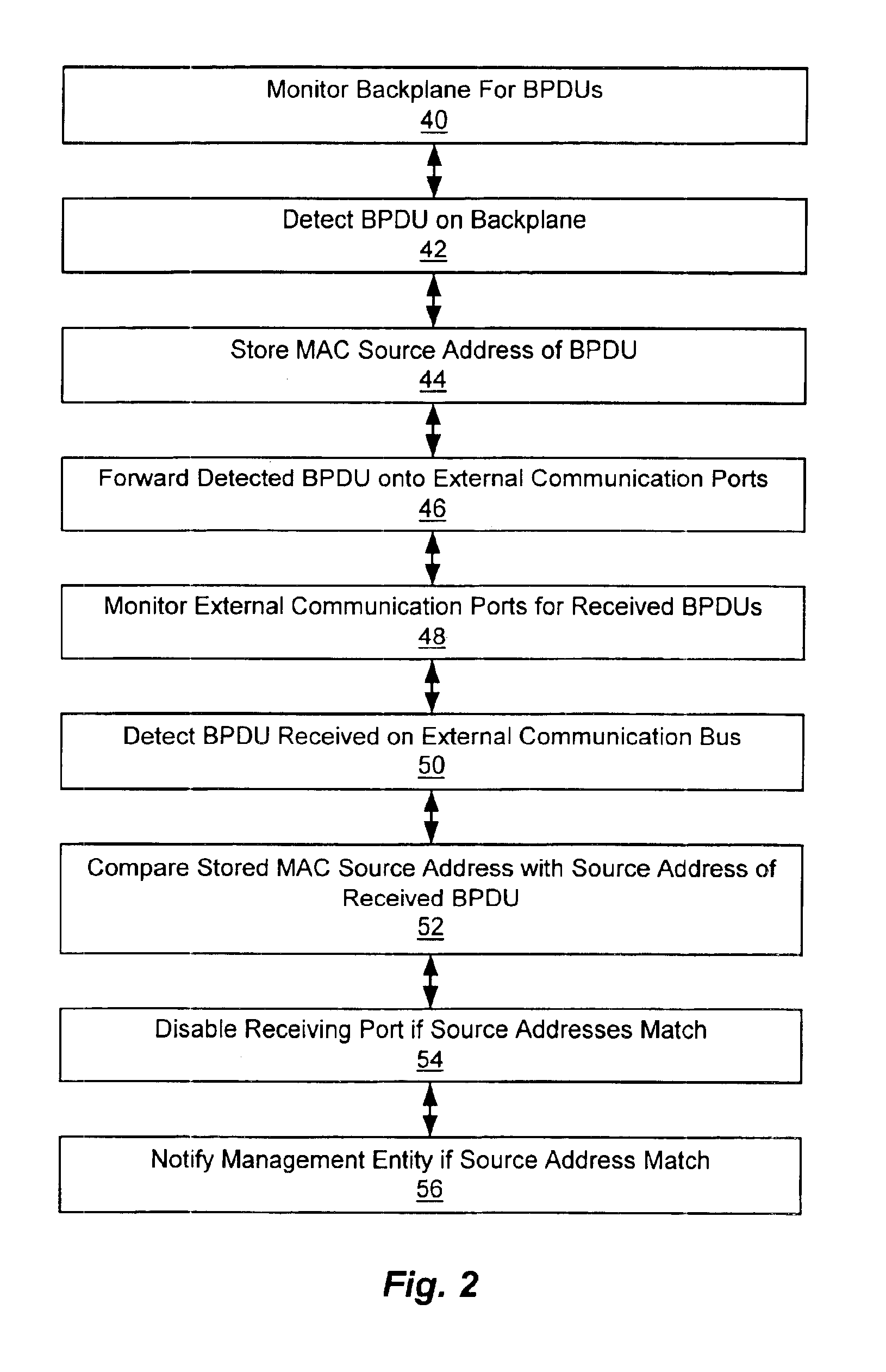Intelligent network topology and configuration verification using a method of loop detection
a topology verification and intelligent network technology, applied in the field of communications network topology configuration verification using a loop detection method, can solve the problems of prohibitively expensive implementation of spanning tree algorithm on relatively low cost bridging devices, inability to achieve the spanning tree algorithm in time, so as to reduce the likelihood and reduce the cost. the effect of cost and low cos
- Summary
- Abstract
- Description
- Claims
- Application Information
AI Technical Summary
Benefits of technology
Problems solved by technology
Method used
Image
Examples
Embodiment Construction
As depicted in FIG. 1, in an illustrative embodiment of the disclosed system, a network hub 10 includes a switching fabric 14, a number of bridge type I / O modules, shown as bridge A 16, bridge B 18 and bridge C 19, and point to point connections 12, 13 and 15 interconnecting the bridge type I / O modules to the switching fabric 14. The point to point connections 12, 13 and 15 each terminate at one of backplane ports 21, 25 and 27 within a respective one of the bridge type I / O modules 16, 18 and 19. In this way, the point to point connections 12, 13 and 15 form a star wired backplane. The star wired backplane illustrated by point to point connections 12, 13 and 15 in FIG. 1 is referred to herein as the “backplane”.
Each of the bridge type I / O modules in the network hub 10 of FIG. 1 includes a number of external communication ports, shown as external communication ports 17 in bridge A 16. Each of the external communication ports of the bridges shown in FIG. 1 may be coupled to an end sta...
PUM
 Login to View More
Login to View More Abstract
Description
Claims
Application Information
 Login to View More
Login to View More - R&D
- Intellectual Property
- Life Sciences
- Materials
- Tech Scout
- Unparalleled Data Quality
- Higher Quality Content
- 60% Fewer Hallucinations
Browse by: Latest US Patents, China's latest patents, Technical Efficacy Thesaurus, Application Domain, Technology Topic, Popular Technical Reports.
© 2025 PatSnap. All rights reserved.Legal|Privacy policy|Modern Slavery Act Transparency Statement|Sitemap|About US| Contact US: help@patsnap.com



